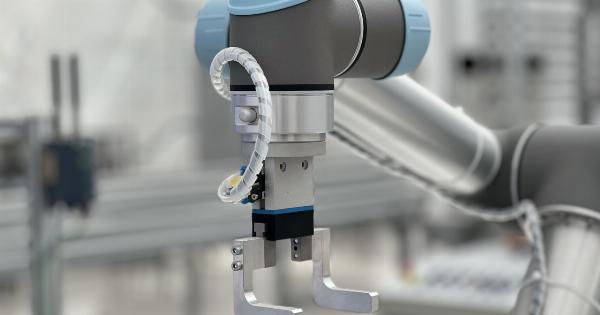Undergoing hip replacement surgery can be a life-changing experience for individuals suffering from chronic hip pain and limited mobility.
However, the lengthy recovery period associated with this procedure has often deterred many patients from pursuing surgery as a viable option. That is until now. Introducing a groundbreaking new technique that promises to significantly reduce hip replacement recovery time, enabling patients to regain their quality of life faster than ever before.
The Current Scenario: Lengthy Hip Replacement Recovery
Traditionally, hip replacement surgery involves the removal of the damaged joint and the insertion of an artificial implant to restore functionality.
While this procedure has proven to be highly successful in alleviating pain and improving mobility, the recovery process can be quite arduous. Patients typically experience significant pain, swelling, and restricted movement immediately after surgery.
Rehabilitation and physical therapy are then required to redevelop muscle strength and range of motion, often taking several months or even up to a year.
Introducing the Minimally Invasive Hip Replacement Technique
The innovative minimally invasive hip replacement technique aims to revolutionize the recovery process by minimizing trauma to the surrounding tissues and structures.
This novel approach allows for smaller incisions, reduced muscle dissection, and decreased blood loss during surgery. By minimizing the overall trauma to the hip joint, patients can expect a shorter and less painful recovery period.
The Key Advantages of the New Technique
1. Reduced Incision Size: With the minimally invasive technique, small incisions are made compared to the larger incisions required with traditional hip replacement surgery.
This leads to less scarring, reduced risk of infection, and faster healing overall.
2. Less Disruption of Surrounding Muscles: The innovative approach involves minimal disturbance to the surrounding muscles and soft tissues.
By avoiding extensive muscle dissection, patients experience less pain and faster recovery of muscle function.
3. Shorter Hospital Stay: Due to the less invasive nature of the procedure and reduced postoperative pain, patients often require a shorter hospital stay.
This not only contributes to a quicker recovery but also helps lower the risk of hospital-acquired infections and complications.
4. Accelerated Rehabilitation: Minimally invasive hip replacement techniques promote earlier mobilization and faster resumption of physical therapy.
This enables patients to regain their strength and flexibility more rapidly, leading to improved functional outcomes.
5. Quicker Return to Daily Activities: One of the most significant advantages of the new technique is its ability to allow patients to resume their regular daily activities sooner.
Whether it be work, hobbies, or spending quality time with loved ones, patients can regain their independence and quality of life more swiftly.
Who Can Benefit from the Minimally Invasive Technique?
The minimally invasive hip replacement technique is suitable for a wide range of patients, including those suffering from osteoarthritis, rheumatoid arthritis, avascular necrosis, and other hip joint conditions.
However, it is essential to consult with an experienced orthopedic surgeon to determine if you are an ideal candidate for this procedure based on your individual circumstances.
What to Expect During the Procedure
Prior to surgery, your orthopedic surgeon will explain the entire procedure in detail and address any concerns you may have. On the day of the operation:.
1. Anesthesia: You will be given either general anesthesia or a regional block, depending on your surgeon’s recommendation.
2. <strong-Incision: The surgeon will make small incisions to access the affected hip joint.
3. Implant Placement: The damaged joint will be removed, and the artificial implant will be meticulously positioned in place.
4. Closure: The surgeon will close the incisions using stitches or staples, as per their preference.
5. Recovery: After the surgery, you will be taken to a recovery area where you will be closely monitored by the medical team. Pain management strategies will be employed to ensure your comfort.
Postoperative Care and Rehabilitation
Immediately following the surgery, you will begin the recovery process. Your healthcare team will guide you through the necessary postoperative care, which typically includes:.
1. Pain Management: You will be prescribed medications to control pain and inflammation.
2. Physical Therapy: Rehabilitation exercises and physical therapy sessions will be initiated to improve strength, flexibility, and overall function of the hip joint.
3. Home Modifications: You may need to make temporary adjustments to your home environment to ensure a safe and supportive recovery.
This may include using assistive devices, such as crutches or walkers, and rearranging furniture for better mobility.
4. Follow-up Appointments: Regular follow-up appointments with your orthopedic surgeon will be scheduled to monitor your progress and address any concerns or questions you may have.
Tips for a Speedy Recovery
While the minimally invasive hip replacement technique significantly reduces recovery time, it is crucial to follow these tips to aid in your swift recovery:.
1. Adhere to Physical Therapy Guidelines: Attend all recommended physical therapy sessions and diligently perform your prescribed exercises at home.
2. Maintain a Healthy Diet: A nutritious and well-balanced diet rich in essential nutrients will facilitate proper healing and promote optimal recovery.
3. Follow Medication Regimen: Take all prescribed medications as directed by your healthcare provider to manage pain, prevent infection, and facilitate healing.
4. Monitor Wound: Keep a close eye on the surgical incisions for any signs of infection, such as redness, swelling, or discharge. Contact your surgeon if you notice any concerning changes.
5. Stay Hydrated: Ensure that you drink an adequate amount of fluids to keep your body hydrated and promote healing.
The Future of Hip Replacement Surgery
The development of minimally invasive techniques for hip replacement surgery marks an exciting milestone in orthopedic medicine. As further advancements continue to emerge, we can expect even shorter recovery times and improved surgical outcomes.
The focus on patient-centered care and enhanced recovery protocols will undoubtedly shape the future of hip replacement surgery.
Conclusion
The introduction of the minimally invasive hip replacement technique has raised the bar for patients seeking relief from hip joint problems.
By minimizing trauma to the surrounding tissues, this groundbreaking approach significantly reduces recovery time, allowing patients to regain their mobility and independence faster than ever before. With the ongoing advancements in minimally invasive surgery, the future holds even greater hope for patients in need of hip replacement procedures.


























